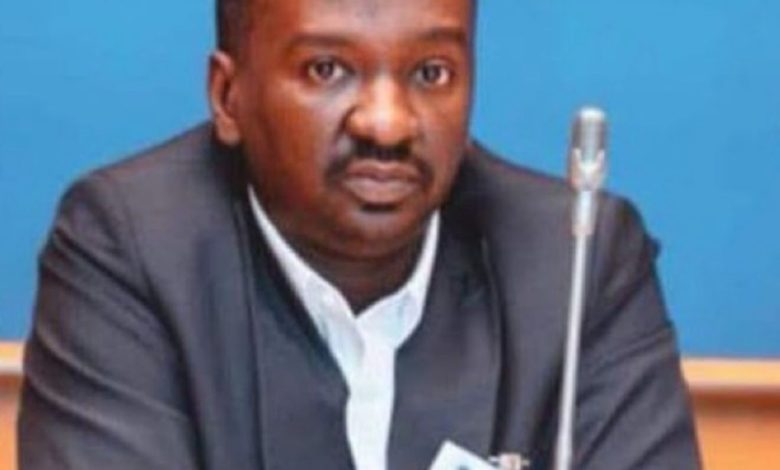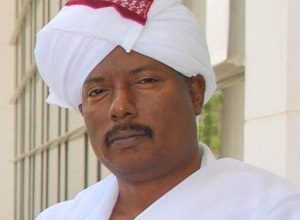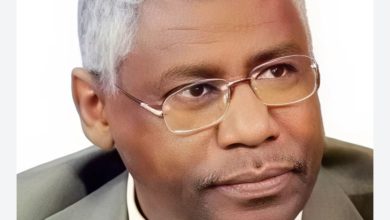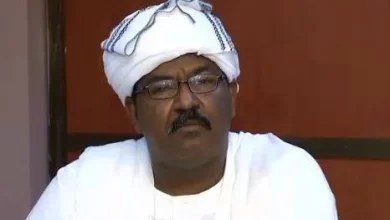From Mosul to Khartoum: When the State Triumphs Over Rebellion

Dr. Abdel-Nasser Salam Hamed
From Mosul to Khartoum… Two capitals buried under the ashes of armed rebellion, yet they rose from the rubble, led by national armies and the will of the peoples who rejected surrender to chaos. In Iraq, the ISIS project in Mosul fell in 2017, and in Sudan, the Rapid Support Forces (RSF) project collapsed with the liberation of Khartoum in May 2025. This article explores how the state prevails when it stands firm, excels in combat, and has an alternative project to destruction.
On May 20, 2025, the Sudanese army announced the complete liberation of Khartoum, after a conflict that began in April 2023 against the RSF militia. This event marked a pivotal moment in the war and a resounding collapse of the armed rebellion project that sought to divide the country and undermine the state’s institutions.
Just as Mosul represented the heart of the ISIS project in Iraq, Khartoum symbolized the political and symbolic heart of the RSF. In both cases, the conflict centered on controlling the heart of the state, not just land or military sites.
The RSF’s tactics in the capital failed despite its early control over vast areas due to excessive expansion without defensive depth, reliance on civilians as human shields, which sparked widespread popular rejection, and the lack of expertise in urban warfare, coupled with administrative weakness and the absence of services in the areas under its control.
On May 20, 2025, the operation to liberate Salha from the RSF forces was one of the most complex and decisive battles in the military campaign to retake Khartoum. Salha, located southwest of Omdurman, had transformed over two years into one of the most fortified and concentrated areas of the RSF in the capital and was a field headquarters for leadership and command on the western Nile front. Unlike conventional battles, the Sudanese army in Salha faced a form of urban guerrilla warfare amid densely populated residential areas, which required highly precise movements to minimize civilian casualties. The Sudanese special forces conducted early targeted operations to locate leadership gatherings and ammunition stores, using intelligence gathered on the ground from local residents. For the first time during the battles inside Khartoum, tactical drones were intensively used to target sniper units and mobile defenses in narrow alleyways. At the same time, military engineering units executed operations to open safe passages for civilians and dismantle IEDs planted by the militia. Once the northern defenses of Salha were breached, the RSF’s supply lines, which were running through White Nile and southern Jebel Aulia, collapsed, leading to a mass flight of militia fighters towards open areas without fire or logistical cover. The significance of the battle was not just geographic, but psychological and strategic, as the fall of Salha was practically an announcement of the end of the RSF’s organized presence in the capital.
The Sudanese army relied on smart encirclement, precise surgical strikes, intelligence cooperation with locals, synchronized attacks on command centers, and a media psychological war that enhanced the RSF’s internal collapse. The army succeeded in liberating Khartoum without widespread destruction of infrastructure, a notable achievement in a city war of this scale.
According to estimates from NGOs and independent field reports, the war in the capital and surrounding areas caused at least 150,000 deaths since April 2023 and displaced over 13 million people, including 4 million who crossed borders into neighboring countries. This war was described as one of the worst humanitarian disasters in Africa over the past decade.
Despite documenting grave violations, the international response remained silent or complicit. Some regional powers provided indirect logistical support or political cover for the RSF, but the liberation of Khartoum exposed this complicity and undermined the legitimacy of the militia. Human Rights Watch said in its report released in March 2025: “We have documented irrefutable evidence of the RSF committing crimes against humanity, including field executions, rape, and attacks on civilian infrastructure in Khartoum and Darfur.” (HRW – Sudan Report, March 2025)
Regionally, the UAE was accused of providing indirect logistical support to some RSF units. Egypt adopted a supportive approach to the Sudanese army as a national state institution, reaffirming support for Sudan’s unity and territorial integrity and rejecting interventions that threaten the country’s stability. Russia monitored the situation through the activities of the Wagner Group in the region, while the United States supported ceasefire efforts but did not exert enough pressure to stop the violations.
The liberation of Khartoum is not the end of the war, but the beginning of a delicate phase that requires a comprehensive national movement, including the following obligations: the formation of an inclusive transitional civilian government, rebuilding state institutions, initiating a transitional justice process and fair accountability, launching an urgent reconstruction plan, and genuine national and community reconciliation.
The Battle of Khartoum displayed clear characteristics of fourth-generation warfare, as the enemy was not a conventional army but a semi-organized armed force with funding, mobility, and unconventional tactics. The RSF forces relied on positioning within civilian structures as cover and used media as a parallel weapon, while the army chose a strategy of attrition and exhaustion, with superiority in intelligence and tactics. The most important military lesson: regular armies, even in the complexities of urban warfare, can prevail when they adhere to smart planning and engagement with the local community.
The fall of the RSF in Khartoum was not just the end of its presence in the capital, but a central moment that will likely lead to its field and organizational collapse across the rest of Sudan. Khartoum was not only the political capital, but also the RSF’s primary leadership and logistical center, the hub of financing, media and psychological control, and the base for supply networks linked to other regions, from Darfur to Kordofan and parts of the Gezira. With Khartoum’s fall, communication and command lines were severed, and signs of field disintegration began to appear, the most prominent being the collapse of morale in the outskirts of Darfur, a decline in funding capabilities, and the loss of control over vital roads and crossings that passed through Khartoum; weak coordination between field units, where unified command in the capital played a decisive role in directing operations and linking fronts together. Military history proves that the fall of the capital in irregular wars accelerates the collapse of the military and political project of the rebels, as happened in Mosul and Sirte. If the militia cannot maintain the “symbol of its existence,” its ability to hold in the margins will quickly erode. Therefore, the liberation of Khartoum is not the end of a single battle, but the beginning of a series of inevitable collapses for the RSF project, unless external interventions reshape the balance of power—which seems unlikely at the moment.
The liberation of Khartoum was not merely a military victory but a decisive moment in reaffirming the state’s legitimacy both domestically and internationally. The fall of the RSF in the capital ended the illusion of an alternative force and restored popular and institutional recognition of the army as the representative of legitimate authority. It also broke the barrier of fear in other areas that began to move independently against the militia. Internationally, the door to diplomatic recognition of a new transitional phase was opened, and Sudan repositioned itself in the strategic equations of the Red Sea and the Horn of Africa. The liberation of Khartoum was a turning point in Sudan’s national identity, defining who holds both “legitimacy” and “power” simultaneously.
The liberation of Khartoum, in its symbolism and strategy, is akin to what happened in Mosul, as the goal was not only to expel an armed group but to reclaim the state from the grip of a structured rebellion project. The challenge now is to transform the victory into a unifying national project that restores Sudan’s civility, justice, and unity. The Khartoum that was liberated is not just a city that regained its breath… but a whole nation that must be rebuilt from the ruins of fear, with hope that cannot be broken.



